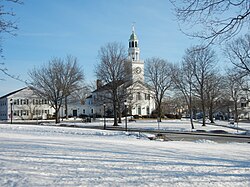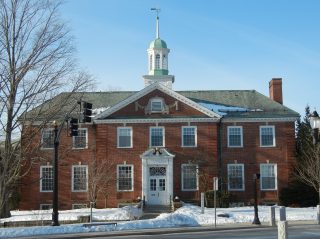Reading Painting Company
★★★★★
Proline Painting Company: Your Trusted Painting Contractor in Reading, MA
In Reading, MA, when it comes to top-quality painting services, Proline Painting Company stands as a benchmark. Our professional team of skilled painters caters to both residential and commercial clients, delivering results that not only meet but exceed expectations. The Proline Painting Company, based in Reading, MA, is a one-stop solution for all your painting needs, promising you an outcome that’s nothing short of perfect.
Do You Have These Problems?
- Difficulty finding a reliable painting company that delivers on their promise of quality?
- Experiencing delays and lack of professionalism from your current painting service?
- Struggling with painting companies that overcharge and fail to provide value for your money?
- Having trouble finding a painting service that offers both residential and commercial services?
- Concerned about the environmental impact of your painting projects?
Local Painting Company: Proline Painting Company — Reading, MA
Proline Painting Company is proud to serve Reading, MA as a local painting company with a solid reputation. With over a decade in business, we’ve built a name for ourselves by consistently delivering premium quality painting services. Our team comprises professionals who bring along years of experience, skill, and a deep understanding of how color impacts a space. As a local company, we’re deeply invested in our community and strive to improve it one painting project at a time.
Commercial Painting Services
At Proline Painting Company, we understand the unique requirements that commercial painting projects entail. Our Reading team is trained to deliver fast and efficient services without disrupting your business operations. We handle everything from offices, retail stores, restaurants to large commercial complexes. With our commercial painting services, we guarantee a visually appealing workspace that embodies your brand identity and enhances productivity.
Residential House Painting Services
Home is where the heart is, and at Proline, we take that to heart. Our residential painting services are designed to transform your home into a space that reflects your personality and style. We treat every project with the same level of importance, whether it’s a single room or the entire house. Our professional painters in Reading work diligently to ensure a clean, efficient, and timely completion of the project, resulting in a beautifully painted home that you can be proud of.
Painting Contractor Process
At Proline, we follow a systematic painting process to deliver top-notch results. Our painting process starts with an in-depth consultation where we understand your vision and requirements. We then prepare the area by protecting furniture, fixtures, and flooring, followed by surface preparation, which includes washing, scraping, sanding, and priming as needed. The final step is the application of the chosen paint in a meticulous manner. Our transparent process ensures you’re aware of each step we undertake to bring your vision to life.
Reading’s Most Affordable Painters Rates
Our commitment to our clients extends to our pricing as well. At Proline, we believe in providing exceptional service at fair prices. Our painting company rates are competitive and transparent, with no hidden costs. We provide detailed estimates upfront, allowing you to understand exactly what you’re paying for. Our goal is to offer top-tier painting services that deliver excellent value for your investment.
5 Star Rated Painting Company Reviews
We take immense pride in the positive reviews we’ve received from our satisfied clients. Their words not only inspire us but also serve as a testament to our commitment to excellence. Our painting company reviews reflect our high standard of service, our professional approach, and our attention to detail. We encourage prospective clients to read these reviews to understand why Proline is a top-rated painting company in Reading, MA.
Searching For a Painting Company Near You
If you’re searching for a reliable, professional, and affordable painting company near you, look no further than Proline Painting Company. Based in Reading, MA, we offer comprehensive painting services to meet a variety of needs. We’re just a call away from transforming your space with high-quality, long-lasting paint jobs.
Painting Company Jobs In Reading, MA
At Proline, we believe that our strength lies in our team. We’re always on the lookout for dedicated individuals to join us in delivering outstanding painting services. If you’re looking for rewarding painting company jobs, we encourage you to explore the opportunities at Proline. We offer a supportive work environment, competitive pay, and opportunities for growth.
Eco-friendly Painting Company
As an eco-friendly painting company in Reading, we are committed to minimizing our environmental impact. We use low-VOC or VOC-free paints whenever possible and adhere to practices that reduce waste. Our goal is to deliver beautiful paint jobs while respecting the planet and contributing to a healthier environment.
Beloved House Painters in Reading, MA
5-Rated On Google For Painting Contractors
Your home is not just a house and a structure with walls, ceilings, doors, rooms and windows but it serves as an expression of yourself, your character, and your personality. Our painting contractors have carefully picked local house painters who are ready to start a painting project with you! These expert painters will make sure that any painted room is a pleasant experience. At Proline Painting Service, we know that you will not settle for less, and that is why we have to ask you to consider one of the most respected painting contractor in Reading, MA.
- Reading Painting
- Full Service Painting Company
- Painting Services
- Reading Painters Cost & Pricing
- Commercial Painters
- Painting Contractors
- Commercial Painting Contractors
- Exterior Painting
- Interior Painting
- Cabinet Painting
- Reading Contractors
- General Contractor
- Home Remodeling Contractors
- Remodeling Contractors
- Drywall Contractors
- Kitchen Remodeling
- Bathroom Remodeling
- Basement Remodeling
- Office Painters
RESIDENTIAL & COMMERCIAL
Reading Painting Company
Painting Company FAQs
How much does your painting service cost?
Every painting project is unique, and the cost can vary based on the size of the area, the complexity of the work, and the type of paint used. We provide a detailed, no-obligation estimate after assessing the project.
Do you offer commercial and residential painting services?
Yes, we provide both commercial and residential painting services. Our team has the expertise to handle projects of all sizes and complexities.
How long does a painting job usually take?
The duration of a painting job depends on several factors, including the size and condition of the area to be painted and the type of paint used. Once we assess your project, we can provide a more accurate timeline.
Can you provide references or examples of previous work?
Absolutely! We are more than happy to share references and examples of our work. Customer satisfaction is our top priority, and we are proud of the work we do.
What type of paint do you use?
We use only high-quality paints from reputable manufacturers. The specific type and brand of paint will depend on the project requirements and your preference.
Are your painters insured and licensed?
Yes, all our painters are fully insured and licensed. We believe in maintaining the highest standards of safety and professionalism in all our projects.
How do you prepare the area for painting?
We follow a thorough preparation process that includes covering furniture and fixtures, cleaning the surfaces, and doing any necessary repair work. Proper preparation is crucial for achieving the best results.
Do you offer a guarantee on your work?
Yes, we stand behind our work and offer a satisfaction guarantee. If there is any issue with the work done, we are committed to making it right.
Can you help with color selection?
Absolutely! We offer color consultation services to help you choose the perfect color palette that matches your taste and complements your space.
Are you an eco-friendly painting company?
Yes, we are committed to eco-friendly practices. We use environmentally-friendly paints and ensure our processes minimize waste and impact on the environment.
How do I choose a painting company?
Choosing a painting company involves considering factors such as experience, reputation, the range of services offered, pricing, and their approach towards customer service. It is also advisable to check reviews and ask for references.
How much do painting companies usually charge?
The cost of painting services varies depending on the scope and complexity of the project. Most companies provide a detailed estimate after assessing the project, allowing you to understand the costs involved.
What questions should I ask a painting company?
You should ask about their experience, licensing and insurance, the type of paints they use, their preparation and cleanup process, and if they offer a warranty or guarantee on their work.
Are there eco-friendly painting companies?
Yes, many painting companies, like Proline Painting Company, are committed to eco-friendly practices. They use environmentally-friendly paints and adopt procedures that reduce waste and minimize environmental impact.
What services do painting companies offer?
Painting companies offer a range of services including interior and exterior painting, commercial and residential painting, color consultation, surface preparation, and more.
How long do painting jobs take?
The duration of painting jobs depends on various factors such as the size of the project, the condition of the surfaces, and the type of paint used. A detailed estimate from the company should provide an approximate timeline.
How do painting companies prepare the area?
Painting companies prepare the area by cleaning and repairing the surfaces, protecting furniture and fixtures, and setting up equipment. A thorough preparation ensures a smooth painting process and superior results.
What type of paint is best for my project?
The best type of paint for your project depends on the surface to be painted, the desired finish, and the environment. A consultation with the painting company can help determine the best options for your specific needs.
Do painting companies provide color consultation?
Many painting companies provide color consultation services to help clients choose the perfect color scheme for their space. They consider factors like lighting, décor, and personal preferences to provide suitable recommendations.
Are all painting companies insured and licensed?
Reputable painting companies are insured and licensed to protect their clients and employees. It’s important to verify this information before hiring a painting company.
Reading, MA Facts
Reading OVERVIEW
Reading, Massachusetts | |
|---|---|
Town | |
 Downtown Reading in March 2014 | |
 Seal | |
 Location of Reading in Middlesex County, Massachusetts (left) and of Middlesex County in Massachusetts (right) | |
| Coordinates: 42°31′32″N 71°05′45″W / 42.52556°N 71.09583°W | |
| Country | United States |
| State | Massachusetts |
| County | Middlesex |
| Settled | 1644 |
| Named for | Reading, England |
| Government | |
| • Type | Representative town meeting |
| Area | |
| • Total | 9.9 sq mi (25.7 km) |
| • Land | 9.9 sq mi (25.7 km2) |
| • Water | 0.0 sq mi (0.0 km) |
| Elevation | 127 ft (39 m) |
| Population (2020) | |
| • Total | 25,518 |
| • Density | 2,600/sq mi (990/km2) |
| Time zone | UTC-5 (Eastern) |
| • Summer (DST) | UTC-4 (Eastern) |
| ZIP Code | 01867 |
| Area code | 339 / 781 |
| FIPS code | 25-56130 |
| GNIS feature ID | 0618232 |
| Website | http://www.ci.reading.ma.us/ |
Reading ( RED-ing) is a town in Middlesex County, Massachusetts, United States, 16 miles (26 km) north of central Boston. The population was 25,518 at the 2020 census.
History
Settlement
Many of the Massachusetts Bay Colony’s original settlers arrived from England in the 1630s through the ports of Lynn and Salem.
In 1639, some citizens of Lynn petitioned the government of the colony for a “place for an inland plantation”. They were initially granted six square miles, followed by an additional four. The first settlement in this grant was at first called “Lynn Village” and was located on the south shore of the “Great Pond”, now known as Lake Quannapowitt. On June 10, 1644, the settlement was incorporated as the town of Reading, taking its name from the town of Reading in England.
The first church was organized soon after the settlement, and the first parish separated and became the town of “South Reading” in 1812, renaming itself as Wakefield in 1868. Thomas Parker was one of the founders of Reading. He also was a founder of the 12th Congregational Church (now the First Parish Congregational Church), and served as deacon there. He was a selectman of Reading and was appointed a judicial commissioner. There is evidence that Parker was “conspicuous in naming the town” and that he was related to the Parker family of Little Norton, England, who owned land by the name of Ryddinge.
A special grant in 1651 added land north of the Ipswich River to the town of Reading. In 1853 this area became the separate town of North Reading. The area which currently comprises the town of Reading was originally known as “Wood End”, or “Third Parish”.
Reading was initially governed by an open town meeting and a board of selectmen, a situation that persisted until the 1940s. In 1693, the town meeting voted to fund public education in Reading, with grants of four pounds for three months school in the town, two pounds for the west end of the town, and one pound for those north of the Ipswich River. In 1769, the meeting house was constructed, in the area which is now the Common in Reading. A stone marker commemorates the site.
Reading played an active role in the American Revolutionary War. It was prominently involved in the engagements pursuing the retreating British Army after the battles of Lexington and Concord. John Brooks, later to become Governor of Massachusetts, was captain of the “Fourth Company of Minute” and subsequently served at the Battle of White Plains and at Valley Forge. Only one Reading soldier was killed in action during the Revolution; Joshua Eaton died in the Battle of Saratoga in 1777.
In 1791, sixty members started the Federal Library. This was a subscription Library with each member paying $1.00 to join, and annual dues of $.25. The town’s public library was created in 1868.
19th century
The Andover-Medford Turnpike was built by a private corporation in 1806-7. This road, now known as Massachusetts Route 28, provided the citizens of Reading with a better means of travel to the Boston area. In 1845, the Boston and Maine Railroad came to Reading and improved the access to Boston, and the southern markets. During the first half of the 19th century, Reading became a manufacturing town. Sylvester Harnden’s furniture factory, Daniel Pratt’s clock factory, and Samuel Pierce’s organ pipe factory were major businesses. By the mid-19th century, Reading had thirteen establishments that manufactured chairs and cabinets. The making of shoes began as a cottage industry and expanded to large factories. Neckties were manufactured here for about ninety years. During and after Civil War the southern markets for Reading’s products declined and several of its factories closed. For many years, Reading was an important casket manufacturing center.
During the Civil War, members of the Richardson Light Guard of South Reading fought at the First Battle of Bull Run. A second company was formed as part of the Army of the Potomac, and a third company joined General Bank’s expedition in Louisiana. A total of 411 men from Reading fought in the Civil War, of whom 15 died in action and 33 died of wounds and sickness. A memorial exists in the Laurel Hill Cemetery commemorating those who died in the Civil War.
20th century
In the 20th century, Reading became a small, residential community with commuter service to Boston on the Boston and Maine Railroad and the Eastern Massachusetts Street Railway. Both commuter services were later taken over by the Massachusetts Bay Transportation Authority, and for many years, there was discussion of extending the MBTA Orange Line to Reading. Industrial expansion during that time included the Goodall-Sanford Co. off Ash Street, later sold to General Tire & Rubber Company, later known as GenCorp. Additional businesses created after World War I included the Boston Stove Foundry, Roger Reed Waxes, Ace Art, Addison-Wesley Publishing and several other companies. For many years, Wes Parker’s Fried Clams was a landmark off state Route 128.
Military installations also came to the town, with two Nike missile sites, one on Bear Hill and the other off Haverhill Street, and the opening of Camp Curtis Guild, a National Guard training facility. The business community currently consists of a number of retail and service businesses in the downtown area, a series of commercial businesses in and around the former town dump on Walker’s Brook Road (formerly John Street) as well as the Analytical Sciences Corporation (TASC).
In 1944, Reading adopted the representative town meeting model of local government in place of the open town meeting. This retained the representative town meeting and board of selectmen, but focused policy and decision making in a smaller number of elected boards and committees whilst providing for the employment of a town manager to be responsible for day-to-day operations of the local government.
Basketball player Bill Russell lived in Reading in the 1960s at 1361 Main Street, but later moved to 701 Haverhill Street. Vandals broke into the basketball player’s home and damaged his property, leaving racial epithets in their wake as well as defecating in Russell’s bed. Russell left Reading after retiring as coach of the Boston Celtics in 1969.
In recent years the town of Reading struggled with the decisions to build a new elementary school, to cope with the influx of new families to the community, and renovate Reading Memorial High School which was opened in 1954 with an addition added in 1971. Both of these projects were approved and in August 2007 the new $57 million renovation at the High School was completed.
Geography
Reading is located at 42°31′33″N 71°6′35″W / 42.52583°N 71.10972°W (42.52585, −71.109939). According to the United States Census Bureau, the town has a total area of 9.9 square miles (25.7 km2). No significant amount of land is covered permanently by water, although there is a plethora of vernal pools in various areas of conservation land.
Reading borders the towns of Woburn, Stoneham, Wakefield, Lynnfield, North Reading, and Wilmington.
Demographics
| Year | Pop. | ±% |
|---|---|---|
| 1850 | 3,108 | — |
| 1860 | 2,662 | −14.4% |
| 1870 | 2,664 | +0.1% |
| 1880 | 3,181 | +19.4% |
| 1890 | 4,088 | +28.5% |
| 1900 | 4,969 | +21.6% |
| 1910 | 5,818 | +17.1% |
| 1920 | 7,439 | +27.9% |
| 1930 | 9,767 | +31.3% |
| 1940 | 10,866 | +11.3% |
| 1950 | 14,006 | +28.9% |
| 1960 | 19,259 | +37.5% |
| 1970 | 22,539 | +17.0% |
| 1980 | 22,678 | +0.6% |
| 1990 | 22,539 | −0.6% |
| 2000 | 23,708 | +5.2% |
| 2010 | 24,747 | +4.4% |
| 2020 | 25,518 | +3.1% |
| Population estimate. Source: United States census records and Population Estimates Program data. | ||
As of the census of 2010, there were 24,747 people, 9,617 households, and 6,437 families residing in the town. The population density was 2,486.1 inhabitants per square mile (959.9/km2). There were 9,617 housing units at an average density of 888.8 per square mile (343.2/km). The racial makeup of the town was 92.4% White, 0.8% Black or African American, 0.1% Native American, 4.2% Asian, 0.03% Pacific Islander, 0.21% from other races, and 0.65% from two or more races. Hispanic or Latino of any race were 1.5% of the population.
There were 8,688 households, out of which 36.7% had children under the age of 18 living with them, 63.5% were married couples living together, 8.3% had a female householder with no husband present, and 25.9% were non-families. 22.4% of all households were made up of individuals, and 9.9% had someone living alone who was 65 years of age or older. The average household size was 2.71 and the average family size was 3.22.
In the town, the population was spread out, with 26.3% under the age of 18, 5.1% from 18 to 24, 29.8% from 25 to 44, 24.6% from 45 to 64, and 14.2% who were 65 years of age or older. The median age was 39 years. For every 100 females, there were 93.2 males. For every 100 females age 18 and over, there were 88.3 males.
As of 2015, according to the Census Bureau, the median income for a household in the town was $107,654 and the median income for a family was $124,485. The per capita income for the town was $47,981. Of the families in Reading, 1.0% were below the poverty line, as opposed to 1.9% of the general population. 2.7% of those under age 18 and 3.2% of those age 65 or over were under the poverty line.
Climate
In a typical year, Reading, Massachusetts temperatures fall below 50 °F (10 °C) for 195 days per year. Annual precipitation is typically 44.3 inches per year (high in the US) and snow covers the ground 62 days per year or 17% of the year (high in the US). It may be helpful to understand the yearly precipitation by imagining 9 straight days of moderate rain per year. The humidity is below 60% for approximately 25.4 days or 7% of the year.
Government
The municipal government of the town of Reading comprises a representative town meeting, whose members are elected from eight precincts.
The town elects a five-member select board by general election, who serve for overlapping three-year terms. The select board are responsible for calling the elections for the town meeting, and for calling town meetings. They initiate legislative policy by proposing legislative changes to the town meeting, and then implement the votes subsequently adopted. They also review fiscal guidelines for the annual operating budget and capital improvements program and make recommendations on these to the town meeting. In addition the board serves as the local road commissioners and licensing board, and appoints members to most of the town’s other boards, committees, and commissions.
The day-to-day running of the town government is the responsibility of a town manager, appointed by the board of selectmen.
Transportation
Reading is located close to the junction of Interstate 93 and Interstate 95/Massachusetts Route 128 to the north of Boston. I-93 provides a direct route south to central Boston and beyond via the Big Dig, whilst I-95/128 loops around Boston to the west, crosses Interstate 90/Massachusetts Turnpike, and then continues south before meeting up with I-93 again at Canton.
Reading is served by Reading station on the Massachusetts Bay Transportation Authority’s Haverhill/Reading commuter rail line, which links the town to Boston’s North Station. Plans existed during the 1970s, when this line of track was bought by the MBTA, to extend the Orange Line rapid transit service out as far as Reading. Although new stations were successfully constructed at Malden Center and Oak Grove station, residents just past Oak Grove complained and such plans were put on hold.
Reading is also served by MBTA bus service routes 136 and 137, which run between Reading station and Malden station.
Education
Reading’s public school system, managed by Reading Public Schools, comprises:
- Reading Memorial High School
- Coolidge Middle School
- Walter S. Parker Middle School
- A. M. Barrows Elementary School
- Birch Meadow Elementary School
- Joshua Eaton Elementary School
- JW Killam Elementary School
- Wood End Elementary School
Austin Preparatory School, is a co-ed, independent school, in the Augustinian Catholic tradition, founded in 1962. It is located on 55 acres of land and has an enrollment of 700 students, providing instruction for students in grades 6–12.
Points of interest
- The Parker Tavern – The town’s oldest remaining 17th century structure, built in 1694. This property, on Washington Street, is currently owned and operated by the non-profit Reading Antiquarian Society.
- The roof of the St. Athanasius Parish, on Haverhill St., was designed by Louis A. Scibelli and Daniel F. Tulley, and is one of the largest hyperbolic paraboloids in the Western Hemisphere. The roof was a point of great interest. The pouring of the concrete roof had to be done in one day.
- Burbank Arena skating rink on Haverhill St. as well as private condos on Bear Hill St. both reside over the sites of decommissioned Army National Guard Nike Ajax missile silos.
- The Stephen Hall House, a building on the National Register of Historic Places.
- The Capt. Nathaniel Parker Red House, a building on the National Register of Historic Places, known for its Red exterior. It was the original town Tavern, and a meeting place for notable American Revolutionaries.
- The Walnut Street School, a building on the National Register of Historic Places, and current home to a local community theatre.
Local media
- The Daily Times Chronicle publishes a Reading edition of the newspaper on weekdays.
- The Reading Advocate publishes weekly and is delivered by mail.
- Reading’s Community Access Television station is RCTV, which provides trainings and air-time for residents to produce their own programs.
Notable people
- Jess Brallier, award-winning publisher, best-selling author, and web publisher
- James Cerretani, pro tennis player and ranked No. 50 in the world in doubles play
- Clarence DeMar, seven-time winner of the Boston Marathon, died in Reading, June 11, 1958
- John Doherty, Major League Baseball player
- Mark Erelli, folk musician
- William M. Fowler, U.S. naval historian, professor at Northeastern University and former director of the Massachusetts Historical Society
- Fred Foy, radio and television announcer for the Lone Ranger, Green Hornet, Sgt. Preston of the Yukon, and Dick Cavett shows
- John Hart, originally from Ipswich (born October 13, 1751); served as a regimental surgeon during the American Revolution
- Thomas Junta, hockey dad convicted of involuntary manslaughter
- Danny McBride, lead guitarist for Sha Na Na, a member of the RMHS class of ’63
- Lennie Merullo, professional baseball player who played for the Chicago Cubs starting in 1941 and later moved on to be a professional baseball scout
- Moses Nichols, officer during the American Revolutionary War
- Thomas Parker, founder of Reading
- Eddie Peabody, banjo player
- Chris Pizzotti, former Harvard University and New York Jets quarterback
- Bill Russell, former member of the Boston Celtics from 1956 to 1969
- Matt Siegel, WXKX-FM disc jockey once lived on the West Side
- Tom Silva, general contractor for This Old House on PBS
- Cousin Stizz, rapper, made songs with Migos and has his song “Butterfly” in NBA 2k20
- Charles Stuart, murderer
- Jonathan Temple (1796–1866), Los Angeles, California, landowner, cattle rancher and politician, born in Reading
- William Weston, Vermont politician who served as a member of the Vermont Senate, born in Reading
- Brad Whitford, guitarist for Aerosmith, a member of the RMHS class of ’70
See also
- National Register of Historic Places listings in Reading, Massachusetts
References
Further reading
- Dutton, E.P. Chart of Boston Harbor and Massachusetts Bay with Map of Adjacent Country. Published 1861. A good map of roads and rail lines from Reading to Boston and surrounding area.
- History of the Town of Reading, including the Present Towns of Wakefield, Reading and North Reading with Chronological and Historical Sketches from 1639 to 1874. By Lilley Eaton, 815 pages, published 1874.
- History of Middlesex County, Massachusetts, by Samuel Adam Drake, published 1880, Volume 2. Page 270 Reading by Hirum Barrus and Carroll D. Wright. Page 259 North Reading. Page 399 Wakefield by Chester W. Eaton.
External links
- Town of Reading official website
- Reading Public Library
- Reading Public School System
- Reading Community Television
- Old USGS maps of Reading Archived May 31, 2008, at the Wayback Machine
- Reading Antiquarian Society
★★★★★













